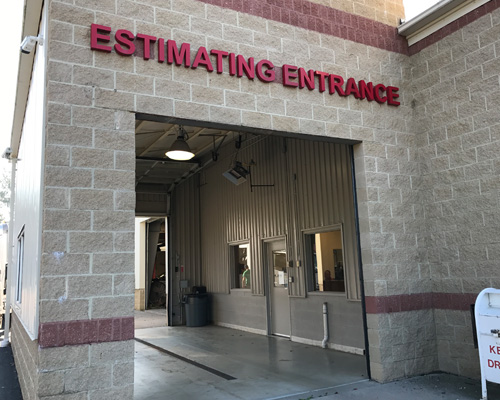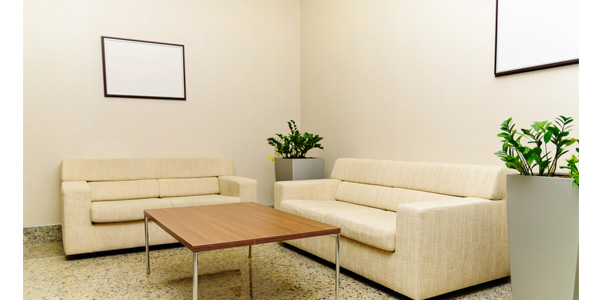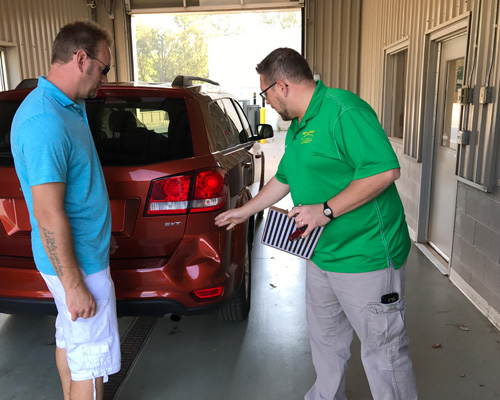
So, what is to be said about closing ratios? I believe we in the industry know what they are, but what do they tell us about our business? Would you consider this to be a key performance indicator?
What goes into the closing ratio? There may be a few items you may have not considered before now. I strongly believe that a strong or weak ratio not only has to do with the personnel but also the surroundings and tools afforded to them.
Curb Appeal
This is huge when we’re selling a home. The way this usually happens is that when we get ready to sell our home, we repair all the stuff that we’ve lived with for years. We finally trim that tree. New mulch goes down in the flowerbeds. We call our brother-in-law and tell him he has to move his camper from our side yard. Prior to that, we turned a blind eye to most of it because we left it go for so long, we didn’t really see it anymore. It became part of the landscape and the “norm.” Rest assured, though, when our clients come to our door for repairs, especially if it’s their first time there, they see all of it. And the discerning eye of the fairer sex has a tendency to see it even more so then us men!

Have you ever asked a friend to come by the shop and asked what they thought when they pulled in? You may not have funds available right now to pay a professional landscaper to come in and knock it out of the park, but there are so many things that can be done very inexpensively to clean up and de-clutter. For example, paint! Last I checked, this is still a relatively cheap way to spruce up the outside of the building. Trim bushes, plant flowers or make a small area with a bench for clients to sit outside while you’re installing that mirror for them.
Lobby
This area is also a crucial welcoming piece of the puzzle. Does it look like it did when you opened your doors in 1978? Does it smell like paint? Is it well lit? Is there a monitor on the wall running a commercial for your business along with local weather?
When customers walk in, it needs to be painstakingly obvious where they should walk to for assistance. Nobody likes that feeling of, “Where do I go now?”
Magazines should be current and no more than two months old. Keep them neat with an organizer, or maybe put them into plastic binders. Do you have coffee and bottled water available? A single-serve coffee maker is the ticket here to having fresh coffee, tea or cocoa available to your clients any time of the day. And don’t let the coffee become like wallpaper stripper after two hours of simmering on the burner!

I will put a challenge out to all shops in this next area. I’m not going to stand on one area here and say that it’s right or wrong. What I will ask you is this: What’s on your walls in the lobby? We tend to litter the walls with certifications, licenses and past awards. If you’re not going to keep the certifications up to date, and if the awards are more than three years old, you may want to consider removing them. Stay current on whatever is hanging up, including that plant in the corner. Displaying a certificate for a class you took in 2009 can send the wrong message. You get the idea, I’m sure.
Keeping everything current will take work and probably a reminder in your Outlook to review the lobby every three months to see what needs changing. You know that monitor I mentioned earlier? Scan awards and certifications for your techs and any OEM ones that you have and run them as a slideshow from a card. This is clean and easy to update! Plus, you’ll no longer have to worry about the frames all matching or hanging crooked on the wall.
In the Client’s Shoes
“Whatchu talkin’ bout, Willis?” (I applaud you if you know this reference.)
What am I talking about? How do you input customer information? How do you input the estimate and gather the information to write it in the first place? Do you walk out to the vehicle with a clipboard, pen and camera? Do you input the information by scanning the VIN into an app on your phone or tablet? Both will get the job done. With our client base being so diverse and technologically savvy today, we have to ask ourselves the hard question: “How does my interaction with my client/potential client come across?” Don’t misunderstand me, pen and paper work well and don’t ever crash like Wi-Fi. But we need to think about other tools available to the industry now that could aid us in building client confidence right off the bat.

Let’s put ourselves in the client’s shoes for a moment, a valuable exercise on every level. For the sake of argument, if you pull up to get an estimate on your 2017 Mercedes and the guy/gal comes out to your vehicle with pen and paper versus a phone/tablet and scanning the VIN and immediately taking pictures that transfer right over to the terminal where you’ll be sitting down with them to write the estimate, which scenario gives you the impression that this shop knows about technology and is embracing it? And might that not indicate to the customer that the shop must know about the technology that’s built into their vehicle as well? This is only going to grow with upcoming generations doing most everything digitally. This hi-tech stuff has been around for a while now, so it’s time to embrace it and show professionalism right from the start.
The Setup
How is your estimating area configured? I was recently at a shop where the client would drive their vehicle into the building, and then the shop would gather some information or confirm if it was an appointment, take the keys and ask them to have a seat in the waiting area (what I like to call the “Decision Area”). In this scenario, while the estimate is being put together, there is zero interaction with the client – no building rapport, and no chance to tell them about who you are as a shop/person or learn about their interests. Where’s the opportunity to unearth potential upsells or opportunities? As you build the estimate without them, they can sit in your lobby and use the “complimentary Wi-Fi” to shop you against your competitors. It happens, believe me!
So, if they’re sitting at a desk with you in an area that feels separated from the rest of the lobby and you have two screens going, one for you and one for them so they can see exactly what you’re doing and know you’re being totally transparent, what silent message does that convey? I like to ask the client this question: “Would you like to build this estimate along with me?” This helps me determine their level of interest and helps me avoid trying to engage someone who really doesn’t want to be involved.
Come up with a question that works for you, but don’t regurgitate a bunch of complex jargon all over your clients that they won’t understand. And please, if you haven’t already done this, take the following word out of your verbiage immediately: TEARDOWN.
Teardown
I mentally cringe anytime I hear that word used to describe a phase in the repair to our clients. Insert the word “disassemble” or use the phrase, “When we take your vehicle apart…” But do NOT use teardown. Have fun with this in the office and have a “Tear Jar” just like a swear jar, but put it toward something fun for the office. If you try to use it just internally, it will slip externally to your clients. Eliminate it altogether. (You can hear the boards creaking as I step down from my soap box.)
Which scenario would you say best helps your closing ratio? Send clients to the Decision Room or build the estimate with them? Which one fosters ownership and relationship with your business? Personally, no matter how fancy your coffee machine is or how good your cookies may be, nothing beats interaction throughout the entire process of the estimate. This is even more effective in a customer-pay situation, where you can do more than just tell them options for parts but show them right on the screen. No smoke and mirrors – clients appreciate that.
Summary
Closing ratios can certainly be impacted by how the estimator interacts and leads the client in the process. Are we giving them the best environment to make that ratio go up before we ever even greet them? Our image, that first impression, is our non-verbal handshake with our clients and potential clients. It may be time to review that approach or take stock in the fact that you have these pieces in place already. If so, kudos to you.













